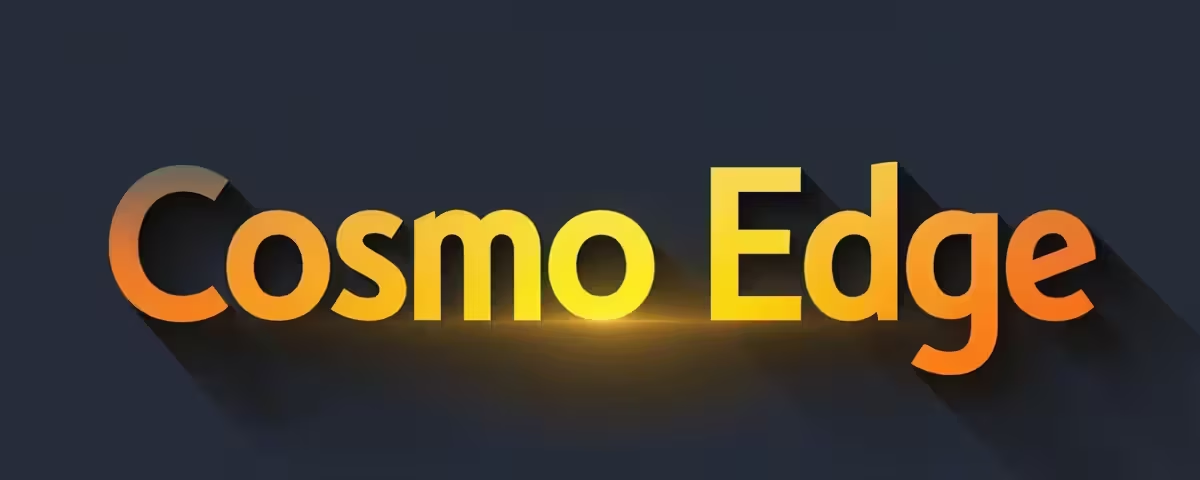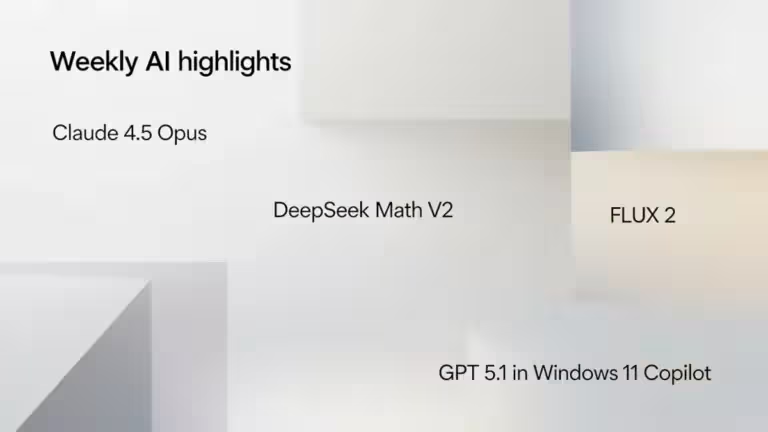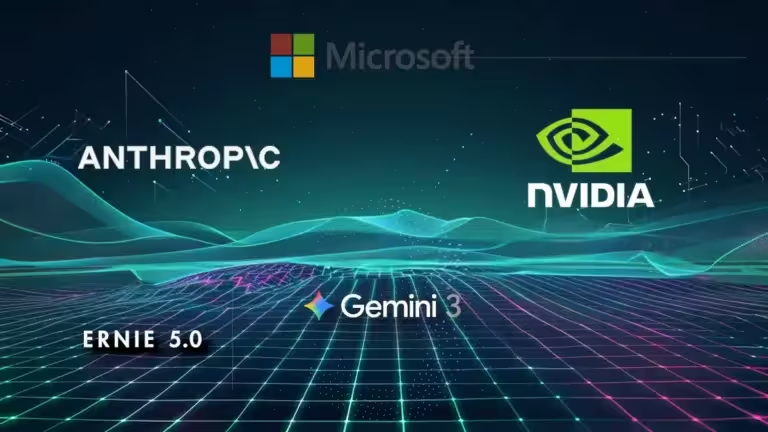Open source media monitoring tools 2025: Phoenix for NGOs and impact organizations

Finding the right open source media monitoring tool in 2025 can transform your monitoring strategy without exploding your budget. Open source media monitoring solutions are increasingly attractive because they offer freedom of use and customization, often without license fees. However, they require technical skills for installation, configuration, and maintenance.
In this guide, we explore Phoenix, the open source media monitoring tool specifically designed for peacebuilders and NGOs working in sensitive contexts, as well as available alternatives and the truth about the real costs of open source monitoring in 2025.
💡 Looking for something else? If you are a business, check out our comparison of paid media monitoring tools or our selection of free media monitoring tools. Open source monitoring solutions are not suitable for most classic commercial uses.
Phoenix: The ethical media monitoring tool for peacebuilding
🔗 Official site: howtobuildup.org/phoenix
General presentation
Phoenix is an open source social media monitoring platform powered by AI, specifically designed to help peacebuilders and mediators working in conflict or divided societies. Developed by the Build Up organization in partnership with datavaluepeople, Phoenix analyzes discourse on social networks to inform effective conflict prevention and resolution strategies.
⚠️ Important clarification: Phoenix is NOT a general-purpose business monitoring tool or a marketing analytics solution. It is designed exclusively for mediation and peacebuilding organizations. Access requires a formal request explaining your social impact project.
Technical architecture
Technologies used:
- Frontend: React and Next.js for a responsive web interface
- Backend: Modern stack handling large-scale data processing
- License: AGPL-3.0 (open source, code available on GitLab)
- Deployment: Self-hosted or free hosted access provided by Build Up
- AI: Machine learning models for multilingual analysis including low-resource languages
4-step workflow
1. Gather Peacebuilders specify keywords, locations, or other criteria to collect data from social networks and sources such as ACLED (Armed Conflict Location & Event Data). Data collection is performed via platform APIs in compliance with terms of service.
2. Classify Machine learning models process incoming data, identifying key themes, trends, and sentiments. Assisted AI tools classify social accounts (community leaders, activists, media, trolls) and content (peace narratives, polarizing discourse, hate speech, disinformation).
3. Explore Users start with a standard dashboard, then customize visualizations to track trends of interest using interactive graphs, filterable tables, and geographic maps. The interface enables cross-analysis by time, geography, sentiment, and actors.
4. Collaborate & Share As open source, Phoenix allows contributors worldwide to enhance capabilities, ensuring continuous evolution and transparency. Insights can be exported and shared with stakeholders (local governments, partner organizations, donors).
Documented use cases
Example 1: Intercommunal tensions in Yemen Understanding how Yemenis express ethnic and religious identities on social media to adapt dialogue programs.
Example 2: Intimidation of immigrants in the Netherlands Exploring narratives and behaviors used to intimidate immigrants and people of color on Instagram to design effective counter-narratives.
Example 3: Disinformation in conflict zones Analysis of hate speech in conflict regions, detection of disinformation campaigns targeting minorities, mapping rumor diffusion.
Access and pricing
Unique economic model:
- Software license: €0 (open source AGPL-3.0)
- Hosted platform: Free for peacebuilders approved via application form
- Source code: Freely downloadable on GitLab for self-deployment
- Support: Full documentation and developer community
How to gain access:
- Fill out the form on howtobuildup.org/phoenix
- Explain your mediation or peacebuilding project
- Wait for Build Up validation (a few days)
- Free initial training provided
Project funding: Phoenix is supported by the Swiss Federal Department of Foreign Affairs and donations. Build Up is actively seeking funding to keep the platform free for small impact-driven organizations.
Measured results
Quantifiable impact:
- Versions v1 and v2 supported hundreds of peacebuilders analyzing social media discourse
- Processing terabytes of social data at scales usually reserved for large tech firms
- Insights revealed narratives driving online discussions, enabling faster evidence-based decision-making
- Used in 20+ countries through collaboration with UN agencies, local peacebuilders, and academic institutions
Sector data 2024-2025: According to research from the United States Institute of Peace and the Toda Peace Institute, social media monitoring tools for conflict prevention contributed to reduced electoral violence in several regions, including Kenya where similar systems identified and defused tensions before escalation. Humanitarian organizations using social analytics platforms report a 40% improvement in their ability to anticipate crises.
Strengths of Phoenix
- ✅ Multilingual support including low-resource languages not covered by most commercial media monitoring tools (Arabic, Swahili, Fulani, etc.)
- ✅ Ethical approach with full code transparency and strict respect for privacy
- ✅ Free for social impact organizations (license + hosting)
- ✅ User-friendly interface with no advanced technical expertise required
- ✅ Active community of developers and users sharing methodologies
- ✅ Automatic anonymization of sensitive personal data
- ✅ Full customization possible thanks to open source code
Key limitations
- ❌ Strict specialization: Built exclusively for peacebuilders and mediators, not for commercial monitoring
- ❌ Access by request only (no open signup, validation required)
- ❌ Complex self-deployment: Significant DevOps skills needed for self-hosting
- ❌ Documentation mainly in English (partial translations)
- ❌ Learning curve for interpreting data in varied cultural contexts
- ❌ Variable performance for low-resource languages (AI models less trained)
Real costs of self-hosted deployment
Scenario 1: Use Build Up’s free hosted platform (RECOMMENDED)
License: €0
Hosting: €0 (provided by Build Up)
Technical maintenance: €0 (managed by Build Up)
Team training: 3 days internal ≈ €2,400 (staff time)
TOTAL: €2,400 one-time, then €0/year recurring
Scenario 2: Self-deployment on your own infrastructure
Year 1:
• License: €0 (open source)
• Initial setup: 3-5 days DevOps = €3,000–5,000
• Cloud hosting: €50–100/month = €600–1,200/year
• Maintenance: 5h/month = 60h/year = €4,800/year
TOTAL YEAR 1: €8,400–11,000
Following years:
• Hosting: €600–1,200/year
• Maintenance: €4,800–6,000/year
• Upgrades: €2,000–4,000/year
TOTAL RECURRING: €7,400–11,200/year
💡 Recommendation: Favor Build Up’s hosted platform rather than self-hosting unless you have absolute data sovereignty requirements.
Ideal users for Phoenix
🎯 Peacebuilding NGOs
- Working in post-conflict or intercommunal tension areas
- Needing discourse analysis to adapt field programs
- Tight budgets but requiring sophisticated analytics
🎯 Conflict research institutes
- Academic studies on social polarization
- Disinformation and propaganda analysis
- Scientific publications requiring robust data
🎯 Humanitarian agencies in sensitive zones
- Operating in violent contexts
- Crisis response coordination
- Anticipation of tensions
🎯 Human rights organizations
- Monitoring hate speech
- Documenting violations
- Data-driven advocacy
Concrete use case: West Africa NGO mediation
Context: Humanitarian NGO, 120 staff, operating in 6 countries in Africa and the Middle East
Phoenix setup:
- Free hosted platform access via Build Up
- Initial training: 5 days (2 technical + 3 methodology)
- 12 active users (regional coordinators + data analysts)
- Monitoring in 4 local languages + French + Arabic
Project: Preventing electoral violence (Country X, 2024)
Preparation phase (3 months before elections): Configured Phoenix with keywords in 4 local languages linked to ethnic tensions. Collected 47,000 Facebook/Twitter posts. Classification: peace narratives vs polarizing discourse vs hate speech. Identified 156 opinion leaders.
Key detections:
1. Rumors and tensions (D-45 and D-30) Phoenix detected a viral false story (2,300 shares/48h) and a spike in hate speech (+127%) in 3 districts. Actions: alert to election commission + fact-checking by media, reinforced dialogue programs. Results: official denial published, spread stopped, successful de-escalation.
2. Amplifying peace voices (D-20) Identified 12 young pro-coexistence leaders (5K–20K followers) with high engagement. NGO provided training and communication support, amplifying positive narratives (+156% peace posts).
3. Manipulation networks (D-15) Detection of 18 coordinated fake accounts sharing identical polarizing content with suspicious patterns (timing, wording). Reported to platforms → 14 accounts suspended, operation dismantled.
Post-election results:
- ✅ No major violent incidents in NGO intervention zones (vs 3 severe incidents in neighboring regions)
- ✅ 4 disinformation campaigns neutralized before critical virality
- ✅ Documented methodology shared with 8 partner NGOs
- ✅ Total cost: €0 (Build Up free hosted platform)
Project coordinator quote: “Phoenix allowed us to identify weak signals and act preventively instead of reactively. The ability to analyze discourse in under-resourced local languages was decisive.”
Data analyst feedback (paraphrased): A monitoring manager at an international organization highlighted that social analysis systems now allow anticipation of crises weeks in advance, fundamentally changing humanitarian intervention strategies. Teams can deploy resources before tensions escalate into open violence.
Alternatives and complementary solutions
If Phoenix does not fit your needs (commercial use): ➡️ Free media monitoring tools: Google Alerts + Feedly ➡️ Paid media monitoring tools comparison: Mention, Talkwalker, Brand24
If you need additional tools alongside Phoenix for humanitarian monitoring:
- GDACS (free): Global disaster alerts
- ReliefWeb (free): Humanitarian news aggregator
- ACLED (free/paid): Conflict and events database
- Ushahidi (open source): Crisis mapping platform
The truth about open source costs in media monitoring
Myth: “Open source = free”
Reality: The software license is free, but the total cost of ownership (TCO) of an open source media monitoring system is not. Hosting, maintenance, and upgrades quickly add up.
3-year TCO comparison: Open source vs SaaS
Scenario: SME with 15 employees, monitoring e-reputation and competitors
Context 2025: While 84% of organizations consider open source compliance a priority according to the OpenLogic 2025 report, SMEs often discover that promised savings are illusory without an in-house technical team.
Option 1: Open source (self-hosted)
Year 1:
• License: €0
• Initial setup: €4,000 (development)
• Hosting: €1,200
• Maintenance: €10,000 (DevOps)
TOTAL YEAR 1: €15,200
Years 2-3 (each):
• Hosting: €1,200
• Maintenance: €10,000
• Upgrades: €3,000
TOTAL YEAR 2-3: €14,200/year
TOTAL 3 YEARS: €43,600
ANNUAL AVERAGE: €14,533
Option 2: SaaS (Mention Business)
Annual cost: €1,188/year (€99/month)
Training: €500 (one-time, year 1)
Year 1: €1,688
Years 2-3: €1,188/year
TOTAL 3 YEARS: €4,064
ANNUAL AVERAGE: €1,355
VERDICT: SaaS is 10.7x cheaper over 3 years for this SME.
When open source media monitoring tools are worth it
Market data 2024-2025: The open source software market is expected to reach $500 billion by 2025, with 22% annual growth. However, over 50% of professionals cite lack of skilled staff and insufficient technical support as barriers to adoption.
Open source makes sense if:
- ✅ Very large data volumes (>10M mentions/month) where SaaS licenses are prohibitive
- ✅ Ultra-specific needs not met by existing tools
- ✅ Absolute data sovereignty requirements (defense, sensitive healthcare, government)
- ✅ An existing technical team (low marginal cost)
- ✅ Academic/research project (team time = nearly free)
- ✅ NGO context with access to low-cost or volunteer developers
Open source is NOT worth it for:
- ❌ SMEs without in-house technical staff
- ❌ Projects requiring fast deployment (<3 months)
- ❌ Organizations needing to focus on business, not tech
- ❌ Standard use cases covered by SaaS tools
- ❌ Those requiring reactive customer support and turnkey training
Hidden costs often overlooked
Initial setup and annual maintenance:
- Installation, configuration, training: 32–72h → €2,560–5,760 (one-time)
- Monthly maintenance (updates, debugging, user support): 7–18h/month → €6,720–17,280/year
- Functional upgrades and bug fixes: €2,000–8,000/year
Recurring cloud hosting: Server, storage, backups, CDN: €45–320/month → €540–3,840/year
Realistic total:
- Year 1: €9,820–26,880 (setup + hosting + maintenance)
- Following years: €9,260–29,120/year
Exception: Phoenix for NGOs
Phoenix is a notable exception because:
- ✅ Free hosting by Build Up (€0 hosting)
- ✅ Maintenance handled by Build Up (€0 technical)
- ✅ Support and training included (€0)
- ✅ Philanthropic funding enables real free access
Cost for NGOs using Phoenix hosted platform: €0 (excluding internal training time)
This exceptional model is only possible thanks to Build Up’s non-profit funding approach.
Other open source alternatives for media monitoring
Beyond Phoenix, the open source media monitoring ecosystem offers some alternatives, though they are less mature and less maintained than proprietary tools.
For social media monitoring
Apphera (archived)
- Full solution for social monitoring, reputation management, SEO
- AGPL v3 license
- Status 2025: Inactive project, limited documentation
- Verdict: Not recommended (uncertain maintenance)
For RSS aggregation and content curation
FreshRSS ⭐
- Self-hosted aggregator, excellent Feedly alternative
- Modern interface, efficient
- Real cost: €5–15/month hosting
- Verdict: Recommended if you have technical skills
Tiny Tiny RSS
- Powerful but complex configuration
- Active community
- Verdict: For advanced users only
Miniflux ⭐
- Minimalist, fast, privacy-focused
- Excellent for simple curation needs
- Verdict: Recommended if you seek minimalism
General limitations of open source monitoring
The open source media monitoring ecosystem is far less developed than other tech sectors (CMS, CRM, web analytics).
Statistics 2024: According to Sonatype, the open source ecosystem saw 6.6 trillion downloads in 2024, but less than 2% concerned media monitoring tools. Complex social API access and infrastructure costs explain much of this disparity.
Main reasons:
- ❌ API restrictions and costs for social networks
- ❌ Need for proprietary media databases
- ❌ Expensive AI and NLP model development
- ❌ High infrastructure scaling needs
Reality 2025: For most professional media monitoring use cases, proprietary SaaS solutions remain more practical than open source, except in very specific cases such as Phoenix for peacebuilding.
Authoritative sources to explore:
- Linux Foundation Research – Global open source adoption studies
- Open Source Initiative – Open source standards and practices
- United States Institute of Peace – Research on technology and peacebuilding
Checklist: Is an open source media monitoring tool right for you?
✅ Choose an open source monitoring solution if:
- You are an NGO or impact-driven organization working in sensitive contexts
- You have strict data sovereignty requirements
- You have a competent technical team (DevOps)
- Your needs are ultra-specific and not covered by the market
- You have time for setup and maintenance (several weeks)
- You value transparency and ethics above all
- Your license budget is zero but you can invest time
Score: 5+ boxes checked → Open source is a realistic option
❌ Avoid open source media monitoring tools if:
- You do not have a dedicated technical team
- You need a ready-to-use solution quickly (<1 month)
- You want reactive customer support
- Your use case is standard commercial/marketing monitoring
- You need integration with CRM or other third-party tools
- You prefer to focus on your core business
- You have a budget, even modest (>€500/year)
Score: 5+ boxes checked → SaaS media monitoring solutions recommended
Phoenix resources and support
Official documentation
- Main site: howtobuildup.org/phoenix
- Source code: GitLab (AGPL-3.0)
- User manual: Includes detailed case studies
- Build Up blog: Methodological articles on Phoenix usage
Training and support
- Initial training: Provided free during onboarding
- Webinars: Monthly knowledge-sharing sessions
- Community: Phoenix user network (peacebuilders)
- Technical support: [email protected]
External resources
Research and learning:
- Toda Peace Institute – Social media and peacebuilding studies across 10 countries
- Conciliation Resources – Practical guides on mediation and dialogue
- SIPRI – Stockholm International Peace Research Institute – Research on technology and conflict resolution
Funding and donations
Phoenix is actively seeking funding to remain free. If your organization benefits from Phoenix and can afford it, consider donating to sustain the project.
How to contribute:
- Financial donations via Build Up’s site
- Code contributions (developers)
- Sharing methodologies and case studies
- Acting as an ambassador among NGOs
Conclusion: The role of open source media monitoring tools in 2025
According to the State of Open Source 2025 report, 96% of organizations invested in open source technologies in the past year, with 53% citing cost reduction as their main motivation. Open source media monitoring tools have a very specific place in the media monitoring and analysis ecosystem in 2025:
Phoenix is the outstanding open source tool for:
- ✅ NGOs and peacebuilding organizations (real free access)
- ✅ Sensitive contexts requiring ethical approaches
- ✅ Multilingual analysis including low-resource languages
- ✅ Transparency and critical data sovereignty
But it is unsuitable for:
- ❌ Commercial or classic marketing monitoring
- ❌ Companies without a clear social mission
- ❌ Organizations needing fast setup (<1 month)
- ❌ Structures without technical skills (if self-hosted)
Essential truth about open source monitoring tools: “Open source equals free” is a myth in 90% of professional use cases. The TCO of a self-hosted open source solution often exceeds the cost of an equivalent SaaS. Phoenix is the exception due to its unique philanthropic model.
Perspectives 2025-2026: Experts expect growing AI adoption in open source tools (85% of AI projects already use open source according to 2024 stats), but market consolidation will likely favor proprietary SaaS for standard monitoring. Social impact organizations will remain the primary beneficiaries of specialized open source ecosystems.
Your next step by profile
If you are an NGO working on peacebuilding: ➡️ Request Phoenix access: howtobuildup.org/phoenix
If you are a commercial business: ➡️ Free tools: Google Alerts + Feedly ➡️ Paid tools: Mention, BuzzSumo, Talkwalker
If you are a technical organization with specific needs: ➡️ Evaluate TCO before launching into open source ➡️ Test Phoenix if peacebuilding use is possible ➡️ Check our guide: How to choose a media monitoring tool 2025
📌 Navigation “Media monitoring tools 2025” series:
- Guide: How to choose your tool?
- Free tools + tutorials
- Paid tools: Full comparison
- Open source: Phoenix for NGOs ← You are here
- Trends 2025, FAQ and tutorials
- Mention Tutorial: Master Setup in 30 Minutes
💬 Questions about Phoenix? Contact Build Up directly: [email protected]
Your comments enrich our articles, so don’t hesitate to share your thoughts! Sharing on social media helps us a lot. Thank you for your support!






